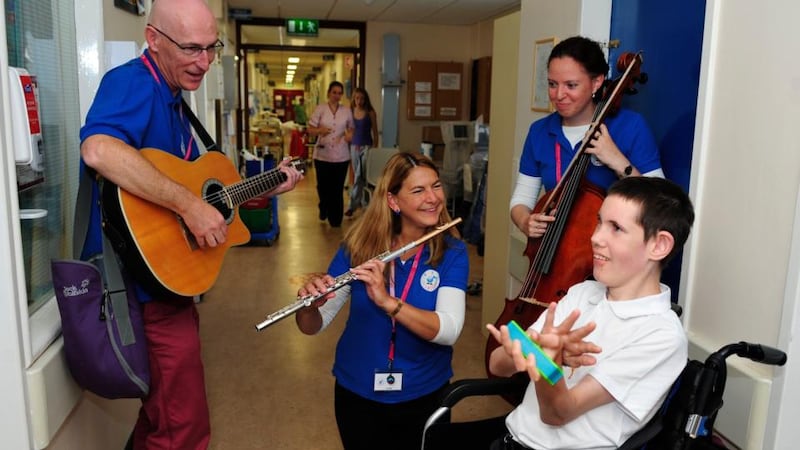'Where words fail, music speaks." So said fairytale writer Hans Christian Andersen. His observation couldn't be more apt when applied to Kids' Classics, a music outreach programme in Dublin's three children's hospitals that is supported by the National Concert Hall (NCH) and the Community Foundation for Ireland, a philanthropic organisation.
Since 2011, more than 2,000 sick children, mainly of primary-school age, have been introduced to the world's most famous classical composers in an engaging and accessible way.
Calming effect
The children are given a lullaby CD, provided by the NCH, designed to provide a calming effect in busy hospital environments. The CD can be played if a distraction is needed when medical tests are being carried out. It can also help get babies to sleep.
Cellist Gráinne Hope is the director of Kids’ Classics. A freelance member of the NCH education department, she is trained in music and healthcare. She completed a course with Musique et Santé, one of Europe’s leading organisations involved in the delivery of live music programmes in hospitals.

Kids’ Classics is the brainchild of Hope. “I wanted to reach out to members of the community who have very limited access to music. I came up with the idea of bringing classical music to children’s hospitals through fun storytelling and interaction.
“I approached the children’s hospitals and when I had them on board, I went to the National Concert Hall, which was the first to fund the programme in 2008 when it was piloted.
“The Community Foundation for Ireland came on board later, agreeing to fund the programme until the end of this year.”
Hospital partners
The NCH is working with hospital partners and funders to secure support for the project until at least 2014. The feedback has been very positive, says Hope.
“You can see it yourself. Even with a very sick child, you get a reaction, although it might only be a smile or a nod of the head.”
Where possible, Hope and her fellow musicians, who completed a residency with Musique et Santé, try to interact with the children “and get them involved so that they sort of lead the musical delivery. There are two ways of working. “We can play music for the children and the staff of the hospital. The children might not be able to interact because of where they are with their treatment, or they could just be very tired.
“But when their health improves and they have a bit of mobility, we give them percussion instruments and get them to conduct or decide what music they’d like to hear played.
“With the older children, we often get them to compose their own music. So the musicians are responding to the children, rather than the other way around.”
Empowering
Hope says the children "get a great buzz out of directing how the sessions go. It empowers them a little bit in a setting where they have very few choices."
While classical music is to the fore in the Kids’ Classics programme, Hope also brings in traditional musicians.
“We play anything from film music to baroque music and lullabies. We also play the children’s favourite TV tunes.”
During the school year, one-hour workshops are held in the school rooms of the hospitals, based on the primary-school curriculum.
“For example, we might do something on Beethoven, telling the children where he came from, and dressing up in costumes [from his era].”
Hope and two or three musicians visit the Children’s University Hospital, Temple Street, and the National Children’s Hospital in Tallaght once a month, funded by the NCH and the Community Foundation for Ireland.
“Our Lady’s Hospital in Crumlin is so delighted with the programme that it is funding a second day of visits by us every month.
“It is also doing an evaluation of the programme to be published in a medical journal because there are very few reports on the delivery of music in hospitals.”
At Temple Street, there are children on dialysis for several hours, two to three times a week.
“Music can offer a real distraction for these children. We have to go to them and play at their bedside because they can’t move. We couldn’t do it without the partnership of the staff.”








